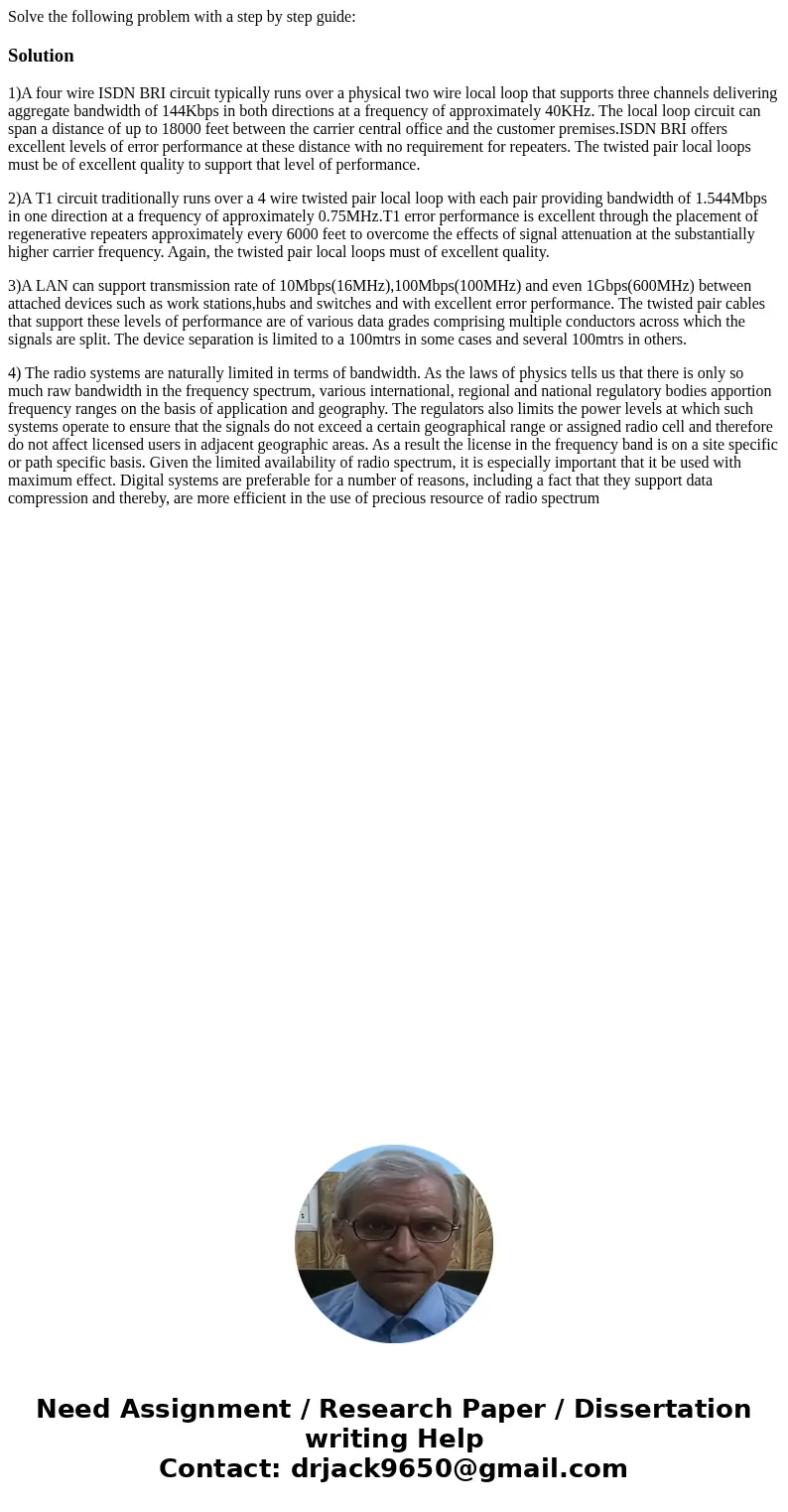Solve the following problem with a step by step guideSolutio
Solve the following problem with a step by step guide:
Solution
1)A four wire ISDN BRI circuit typically runs over a physical two wire local loop that supports three channels delivering aggregate bandwidth of 144Kbps in both directions at a frequency of approximately 40KHz. The local loop circuit can span a distance of up to 18000 feet between the carrier central office and the customer premises.ISDN BRI offers excellent levels of error performance at these distance with no requirement for repeaters. The twisted pair local loops must be of excellent quality to support that level of performance.
2)A T1 circuit traditionally runs over a 4 wire twisted pair local loop with each pair providing bandwidth of 1.544Mbps in one direction at a frequency of approximately 0.75MHz.T1 error performance is excellent through the placement of regenerative repeaters approximately every 6000 feet to overcome the effects of signal attenuation at the substantially higher carrier frequency. Again, the twisted pair local loops must of excellent quality.
3)A LAN can support transmission rate of 10Mbps(16MHz),100Mbps(100MHz) and even 1Gbps(600MHz) between attached devices such as work stations,hubs and switches and with excellent error performance. The twisted pair cables that support these levels of performance are of various data grades comprising multiple conductors across which the signals are split. The device separation is limited to a 100mtrs in some cases and several 100mtrs in others.
4) The radio systems are naturally limited in terms of bandwidth. As the laws of physics tells us that there is only so much raw bandwidth in the frequency spectrum, various international, regional and national regulatory bodies apportion frequency ranges on the basis of application and geography. The regulators also limits the power levels at which such systems operate to ensure that the signals do not exceed a certain geographical range or assigned radio cell and therefore do not affect licensed users in adjacent geographic areas. As a result the license in the frequency band is on a site specific or path specific basis. Given the limited availability of radio spectrum, it is especially important that it be used with maximum effect. Digital systems are preferable for a number of reasons, including a fact that they support data compression and thereby, are more efficient in the use of precious resource of radio spectrum

 Homework Sourse
Homework Sourse